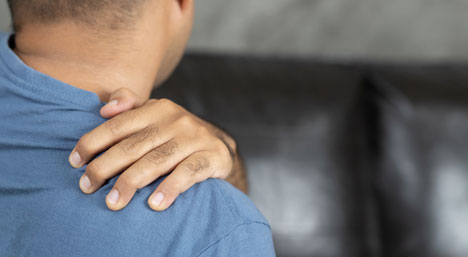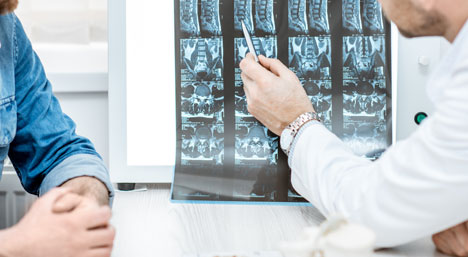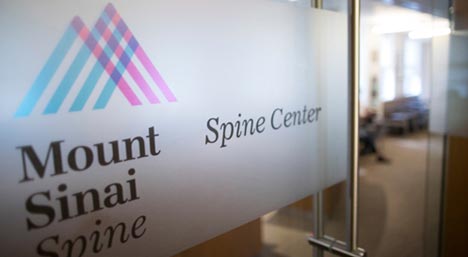Conditions We Treat
Dr. Bronson is experienced in treating complex spinal conditions including spinal trauma, tumors, stenosis, disc herniation, myelopathy, radiculopathy, scoliosis, sciatica, spondylolysis, sponsylolisthesis, kyphosis, and more.
Wesley H. Bronson, MD, MSB
Orthopedic Spine Surgeon
The Mount Sinai Hospital
5 East 98th Street, 4th Floor
New York, NY 10029
Phone: 212-241-5435
Fax: 646-537-9449
Mount Sinai Doctors - Scarsdale
341 Central Park Avenue
Scarsdale, NY 10583
Phone: 212-241-5435
Fax: 646-537-9449
Spondylosis is caused by aging and chronic wear on the spine including the discs or cushions between the vertebrae and the joints between the bones of the spine. There may be abnormal growths or spurs on the bones of the spine (vertebrae).
Over time, these changes can press down on (compress) one or more of the nerve roots. In advanced cases, the spinal cord becomes involved affecting the arms, legs, and balance.
Everyday wear and tear may start these changes. People who are very active at work or in sports may be more likely to have them.
The major risk factor is aging. By age 60, most people show signs of cervical spondylosis on x-ray. Other factors that can make someone more likely to develop spondylosis are:
Symptoms often develop slowly over time, or they may start or get worse suddenly. The pain may be mild, or it can be deep and so severe making movement nearly impossible.
Pain may be felt over the shoulder blade. It may spread to the upper arm, forearm, or fingers (in rare cases).
The pain may get worse:
There may also be weakness in certain muscles. This weakness may not be noticed until a doctor's exam. In other cases, there may be trouble lifting an arm, squeezing tightly with one hand, clumsiness of one hand, or other problems.
Other common symptoms are:
Less common symptoms are:

Dr. Bronson is experienced in treating complex spinal conditions including spinal trauma, tumors, stenosis, disc herniation, myelopathy, radiculopathy, scoliosis, sciatica, spondylolysis, sponsylolisthesis, kyphosis, and more.

Dr. Bronson’s clinical focus comprises the full gamut of cervical, thoracic, and lumbar spinal conditions, ranging from outpatient minimally invasive procedures to complex adult spinal deformity and scoliosis surgery.

Mount Sinai Health System hospitals rank among the finest nationwide when it comes to excellence in delivery of patient care, and Mount Sinai Hospital is ranked worldwide in four specialties including orthopedics.